Just as many of the cities around the region, Penang cuisine offers plenty of choices for the discerning traveler. If you fancy Indian food, you get Indian food. Chinese food, they are all over the place. Malay food, just ask. The city of Georgetown–which people just refer to as Penang as a whole though the island comprises of a lot more areas, including beaches and hills–is dotted with many kopitiams (coffee shops), food courts, street food, restoran (restaurant, but sometimes their appearance is similar to kopitiam), catering to all kinds of taste buds. Not trying the street food / hawker food in Penang is like going to Bali and missing Ubud – you just have to do it. The following is a compilation of what and where to eat, though by no means is the list exhaustive. Most are things I have tried myself, but I have also included some I have heard a lot but did not have the chance to sample yet. This is not going to be the shortest list in the world, you can skip to the dish you like!
Best char koay teow:
Kafe Heng Huat on Lorong Selamat. The stall is owned by a lady who wears a red beret and purportedly a kind of goggles sometimes, though in all my visits I have not seen the goggles on her. Her char koay teow is fried to a perfect texture, just soft enough, with an infusion of wok hei plus a hint of chili. The secret to frying a good char koay teow is in the preparation, you have to separate the koay teow (rice noodle) into strips beforehand, not throwing them in lump and then break them in the wok itself. Hands down the best char koay teow in town so far. RM7.50 for the regular portion.
Honorable mentions:
Cantonment Road Famous Char Koay Teow, Stall 107, Gurney Drive open food court, next to Gurney Plaza, open for dinner daily. His char koay teow is slightly more orangey than the others, perhaps due to the use of egg (I did not ask about the egg).
Char Koay Teow, Restoran Bee Hooi at 415 Jalan Burma, before EON bank, daily 6pm – 10pm, closed alternate Tue. Ask for duck egg, which costs you RM5. Fried by an uncle, with his wife and son or daughter helping. It’s smooth, but on my last try it felt a little bland, though I was impressed the first time.
Kedai Kopi Sin Hwa at 329 Jalan Burma, opposite Balai Polis Pulau Tikus, 10am-5pm. The stall offers duck egg too. This one I have to admit is at a disadvantage as I had to ta pao (takeaway) and by the time I tried it, the char koay teow had already lumped together. RM4.
Yet to try:
Ah Leng Char Koay Teow at Kafe Khoon Hiang, Jalan Dato Keramat / Jalan Dunlop (facing Honolulu club), 8am – 2.30pm, closed Tue. This stall supposedly is the best in the island for those who’ve tried. A plate costs RM9.50.
Sister’s Char Koay Toew at Lam Heng Kafe, 185 Jalan Macalister, opposite Loh Guan Lye Hospital, 8.30am-12.30pm, closed Mon. Their char koay teow is topped with shredded crab meat.
Chendol:
Penang Road Famous Chendol stall. The location is actually at Lebuh Keng Kwee, next to Joo Hooi Kafe off Penang Road, a short walk from Komtar. There were two stalls there, both mentioned they are famous. Although the one on your right as you turned right from Jalan Penang is the one most patrons go to. I tried the left stall and it’s good enough for me. Brown sugar is key in making a delicious bowl of chendol (strips of green bean flour). Perfect accompaniment on a hot day!
Ais Kacang:
Ais kacang is a shaved ice dessert, with red beans, attap chee (palm seed), sweet corn, grass jelly and evaporated milk, less common ingredients are chendol, ice cream, aloe vera, agar agar and fruits.
I tried the ais kacang at Kafe Heng Huat, it’s sweet and glazed with Bandung-like syrup in pink color. It’s a pleasant bowl offering respite from the heat of Penang’s weather.
Yet to try:
Kedai Kopi Low Eng Hoo, Lorong Selamat. This famous ais kacang is actually a few shops away from the char koay teow stall.
ABC Ais Kacang at New World Park food court, Swatow Lane gets the most mention as the best ais kacang in Penang. They throw in different combination of fruits and ice cream in a bowl.
Kek Seng Ais Kacang, 382 – 384 Penang Road, 11am-4.30pm. Famous for their homemade durian ice cream, their ais kacang comes with the ice cream and a big agar agar on top.
Indian food:
Karai Kudi Restaurant, 20 Lebuh Pasar, Little India, 11am-11pm. Serves Southern Indian cuisine. I tried their vegetarian meals which come with an assortment of vegetable and soups. Pretty similar to most Indian food I’ve tried in Singapore. RM7. Unsweetened masala tea goes for RM3.
Yet to try:
Sri Ananda Bahwan, 55 Lebuh Penang. Went by this establishment and saw a buzz of activities inside. They displayed the dishes outside and it’s up to you to choose which dishes you’d like with your rice.
Madras New Woodlands Restaurant, 60 Lebuh Penang, 8.30am-10pm. Just opposite Sri Ananda Bahwan, I did not go in for a closed door always presents a psychological barrier (although Karai Kudi is also a closed door restaurant). They display their sweets stand outside.
Chinese Restaurant:
Teksen Restaurant, 18/20 Lebuh Carnavon, off Lebuh Campbell. This has got to be the best Chinese restaurant food I’ve tasted in Penang. Their specialties are bitter gourd with salted egg, spinach soup with 3 kinds of eggs, braised tofu. They also serve Michael Jackson drink, soy milk mixed with grass jelly (ask for tau cui cham leung fan). So good. So good. RM62 for 3 dishes, rice, and drinks.
Yet to try:
The Cape 海角红楼, 381 Jalan Burma, 11am-11pm. Located on the corner of Jalan Burma and Jalan Cantonment. Simple and wholesome dishes, with rice served in mini claypot.
Goh Huat Seng Teochew Steamboat, 59A Lebuh Kimberley, off Jalan Pintal Tali. Walked past the place as well, the tables are all full.
Sin Kheng Aun Hainanese Restaurant, 2 Lorong Chulia, 11am-2.30pm, 5pm-8pm, closed alternate Mon. Specialty includes Curry Gulai Tumis, Kerabu. Tai Buan Porridge, 173 Lebuh Muntri, 1.30p,-8pm, closed Sun.
Restaurant Bee Hooi, 415 Jalan Burma, opposite Belissa Row, next to EON Bank. This is hands down the best tasting oh chien (fried oyster omelette) I’ve had. It even surpasses the oh chien I tried in Taiwan (called er ah jian). In front of the stall, there’s a newspaper clipping mentioning the chef (jolly smiley guy) returned from Germany in 1995 to open the stall. Try it for yourself. RM6.
Yet to try:
Mr. Gan Crispy Fried Oysters, Lam Ah Coffee Shop, Lebuh Chulia opposite Beach Road fire station, 10.30am-4.30pm, closed Sun and PH.
Nasi Kandar:
Nasi Kandar Beratur, Restoran Liyaqat Ali at Masjid Kapiten Keling. Nasi Kandar is an Indian Muslim food, steamed rice served with a variety of curries and side dishes. I always love anything with spices and curry. I did not get to try this dish and it would be next on my list.
Nasi Lemak:
Ali Nasi Lemak, Sri Weld Food court at Beach Street. Favorite of locals, often eaten as breakfast or lunch. Rice is fragrant and you can choose your dish to go with the sambal gravy, fish, ikan bilis, eggs. Yum.
Now, my favorite meal, breakfast in Penang:
Dim sum:
Tho Yuen Restaurant 桃園茶樓雞飯, 94 Campbell Street, off Lebuh Cintra, 6am-3pm, closed Tue. Known as Tao Yuan as well. Think breakfast, and dim sum comes to mind. The place is located on the first floor of a shophouse with seats stretching to the next houses. It’s clean and has a reputation as the better dim sum house around town. Reminiscent of most traditional dim sum places in Hong Kong, they still push their carts around for patrons to choose. You will find the usual har kow, siew mai, lor mai gai, chee cheong fun, po lo pao, char siew pao, egg tart here, but they also serve porridge in a claypot. Lunch is served here too. Spent RM18 for 2 persons.
Bali Hai Restaurant, 90 Pesiaran Gurney. Pick up what you want from their counters in front and get the servers to write your items on the list. Serves great porridge and chai tow koay (fried carrot cake).
Yet to try:
De Tai Dong Dim Sum Restaurant 大東茶樓, 45 Lebuh Cintra, serves breakfast and dinner.
Aik Hoe Restaurant 益和茶樓,6 & 8 Lebuh Carnavon, 5am-2pm, closed Mon. Fun cheong kuen, yoke aun kuen, wu gok (taro dumpling) are served here. Good reputation, even rivals that of Tho Yuen’s.
Teh Tarik:
Drink stall at Gurney Plaza food court @ Basement 1. Smooth, creamy, tasty. Better than the one I’ve had in Singapore.
Apom:
Stall manned by an Indian seller at Kafe Sin Hup Aun, corner of Jalan Pasar and Solok Moulmein. This is the apom done in a style I’m familiar with, open-faced.
Apom is pancake in Malay, its batter is poured onto a copper place and cooked. The result is it’s crispy on its edge, fluffy in the middle and makes a great morning snack. RM0.60.
Yet to try:
Apom Chooi at Jalan Burma, beside SJKC Union. He adds banana with his apom, and folds them in half. RM0.30.
Ban Chang Kueh / Man Jian Kueh 慢煎糕:
Stall at Pulau Tikus Market, Jalan Moulmein. I almost think having this food is committing a sin. Laden with saturated fat, ban chang kueh is a pancake filled with roasted peanuts, cream corn and sugar. It is delicious, sweet, crispy and a favorite of locals.
Roti bakar / Toasted bread:
Toh Soon Cafe 多春茶座, narrow lane off junction of Campbell Street and Penang Road. This breakfast place is always packed with locals and tourists alike, trying their kopi and traditional toasts. Their bread is toasted on charcoal used to run water boiler above. They serve a variety of breads (toast with kaya and butter, toast with butter and sugar, chocolate toast, etc.), runny eggs, and of course, kopi. RM5.50 for 2 toasts and 2 cups.
Finally, everybody’s pick-me-up, kopi:
Every kopitiam serves kopi, coffee roasted with margarine and sugar, served with condensed milk. A variety is Ipoh White Coffee, brewed and served with condensed milk in cream-color form. Kopi is as delicious and tasty as any food. Sometimes locals patron a shop located far away from their houses just for their kopi, although another kopitiam is just a stone’s throw away. Some of the best I’ve had in Penang:
Restaurant Bee Hooi. This cup got me hooked on kopi ever since my visit in February. Still the best I’ve tasted so far, rich and aromatic, not too sweet.
Toh Soon Cafe. Their kopi is flavorful and smooth, not bitter or sour. They tend to serve it slightly sweeter, so ask for less sweet.
Kong Thai Lai 廣泰來, 6 Jalan Hutton, closed Sun. Less than 100m away from Toh Soon Cafe, the kopi here is where patrons from all walks of life (including a certain sugar mogul) go for their dose. It was featured on local newspaper when I was there. I had this 10 minutes after my first cup at Toh Soon, the kopi carries a bit of a sour note, or maybe it’s just me? RM2.90 for a cup and a toast.
Hai Onn Restaurant, 53 – 55 Penang Road. Serves Hainanese cuisine as well. We were eager for a cup of kopi on Sunday morning but Kong Thai Lai, Toh Soon were closed. A local pointed us to Hai Onn instead. Kopi is great, but didn’t hit me as amazing.
Tau Sar Peah 豆沙餅/ Tambun biscuits:
If I could bring Penang food back to Singapore, I would. But alas, the only thing I could bring back aside from a bag of tea is the famous tambun biscuits or tau sar peah, pastry with green bean paste filling fried with sugar and shallots. It is perfect as an afternoon tea time snack paired with tea as the biscuit tends to stick to your gum and teeth.
Ghee Hiang, 216 Macalister Road and 95 Beach Street. The oldest bakery shop selling tau sar pneah (I wonder the addition of ‘n’ in their peah). Famous for their tau sar pneah and sesame oil. They sell beh teh saw, almond biscuits, hong pneah, and mooncakes too. Tau sar pneah comes in two versions, bigger individual peah (purple box) and smaller one (orange box). RM5.50-RM16.50 for the sesame oil.
Him Heang, 162A Jalan Burma. Their tambun biscuits is the one I’ve tried in the past and I remembered it is fragrant inside and crispy to the bite. Him Heang and Ghee Hiang are rivals, Ghee Hiang has a longer history but both their peahs are good. I prefer Him Heang’s because it’s the first one I tried.
Durian:
The king of fruit is hated by many and loved by many. Penang’s Balik Pulau grows this spiky fruit and now is almost the end of the season. You can get cheap ones at any pasar (market) for RM6-9 a pack. Get good ones (RM20-25) at the stall opposite UMNO building at Macalister Road. Creamy, slight bitter taste, and smooth. Heavenly.
Others:
Nyonya Kueh. Love this as breakfast snack. Plenty of layer cakes, glutinous rice cakes, sweet rolls etc. I can’t remember the names to all of them! Gurney Drive, and a local pasar (market) is where you can find them.
Mamak Mee Goreng. Fried yellow noodle with egg, Indian Muslim style. Kedai Kopi Sin Hup Aun on Solok Moulmein.
Pasembur / Rojak. Fried dough fritters, bean curds, boiled potatoes, prawn fritters, hard boiled eggs, bean sprouts, cuttlefish and cucumber mixed with a sweet thick, spicy peanut sauce. Gurney Drive food court.
Chee Cheong Fan. Rice noodle roll paired with chili and sweet black sauce. This dish can be found at most coffee shops near a market. Jalan Burma / Solok Moulmein stall near the market. Also found at Kuala Kangsar Market.
Ak Th’ng (duck soup). Herbal soup with duck and bee hoon (rice vermicelli). Seemingly healthy but packs a lot of oil.
Koay Teow Th’ng. Rice noodle soup with chicken, fish balls, pork, garlic oil that makes it fragrant. Try the one at Bee Hooi Restaurant, Jalan Burma.
Curry Mee. Yellow noodle in spicy curry soup, with tofu, cuttlefish, prawn, cockles, and pig bloog (optional).
Hokkien Mee. Dish of egg noodles and rice noodles in a fragrant stock, which is made from both fresh shrimp, dried prawns, and pork or chicken, garnished with prawns, fish cake, leafy greens, pork ribs, squid, crisp deep-fried shallots, spring onions and fresh lime. The dish is served with sliced red chili, light soy sauce and sambal.
Won Ton Mee. Noodle served in hot broth and with slices of char siew and wonton dumplings, garnished with leafy vegetables. Kedai Kopi Swee Kong at Pulau Tikus, Jalan Burma.
Peranakan. The mixture of Malay and Chinese cuisines. The food is tangy, aromatic, spicy and herbal and packs a lot of punch. Hot Wok, 124E & F Jalan Burma, 11am-3pm, 6pm-11pm, closed Tue. Perut Rumah, 17 Jalan Kelawei, 11.30pm-3pm, 6pm-10pm.
Assam Laksa. Famous throughout the world, ranked No.7 in the tastiest food in the world article by CNNGo Lifestyle Guide recently. I did not try this dish this time, though I have in the past. It carries a sour taste from the assam (tamarind) used to flavor the soup. Fish is the main ingredient and added with finely sliced vegetables including cucumber, onions, red chillies, pineapple, lettuce, common mint. The stall at Air Itam Market is the most famous of the lot. Try Joo Hooi coffee shop on Jalan Penang too.
Some of the food courts to visit:
– Restaurant Bee Hooi, 415 Jalan Burma, opposite Belissa Row
– Kedai Kopi Swee Kong, Jalan Burma, Pulau Tikus, opposite police station
– Gurney Drive open food court
– New World Park food court on Lorong Swatow
– Kedai Kopi Joo Hooi on Jalan Penang, before Lebuh Keng Kwee
– Sky Cafe on Lebuh Chulia
– Lorong Selamat kopi tiams
– Kafe Sin Hup Aun on Solok Moulmein, steps away from Swee Kong
– Cofee shops in front of Sunway Hotel, off Jalan Macalister. Plenty of stalls in different shop houses.
Pasar (market):
– Kuala Kangsar Market, Jalan Kuala Kangsar, off Jalan Penang
– Pulau Tikus market, off Jalan Burma, enter from Solok Moulmein
– Lebuh Kimberley Market, opposite Komtar and Prangin Mall
If you have been to Penang, you would probably have tasted many of these dishes. If you have not, if there’s a chance, next time in Penang, do try all these fabulous dishes. Bite into the rich, tangy, sour, bitter, sweet, spicy, aromatic, flavorful Penang cuisine and the memory will last you a long time. Sorry for the quality of the pictures. Dig in!

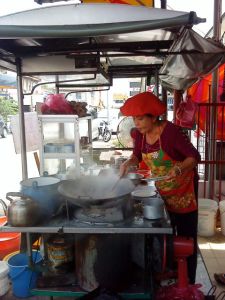


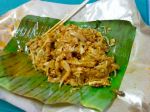
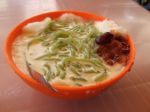
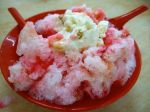
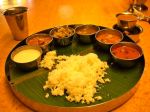






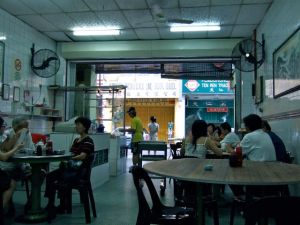
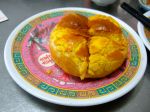














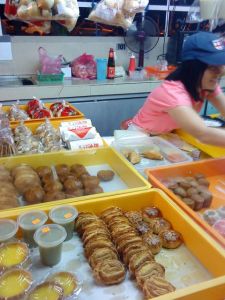






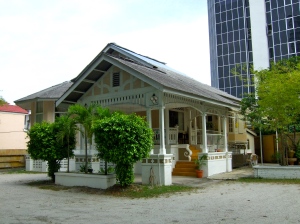




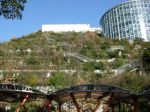






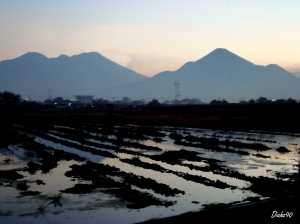





 This is a great week – I was able to wander out at lunchtime everyday for four straight days…
This is a great week – I was able to wander out at lunchtime everyday for four straight days… 










